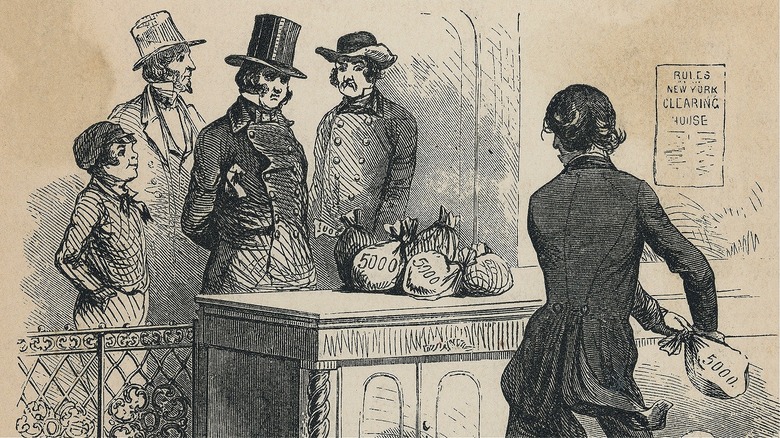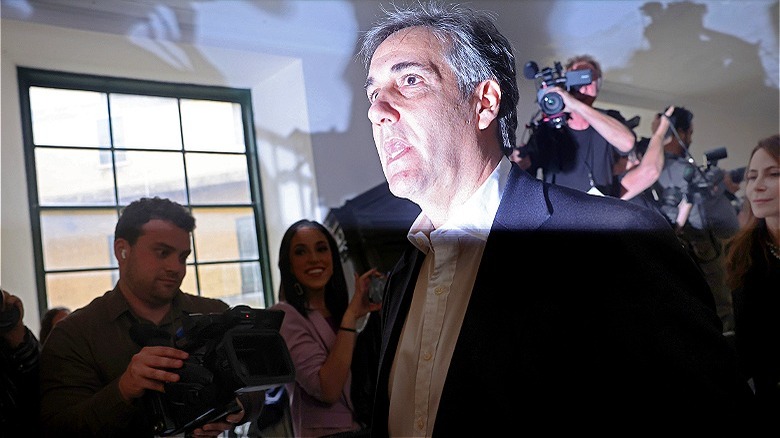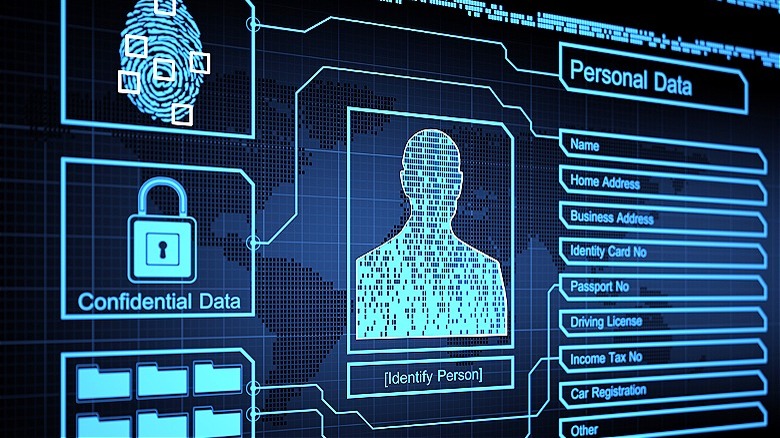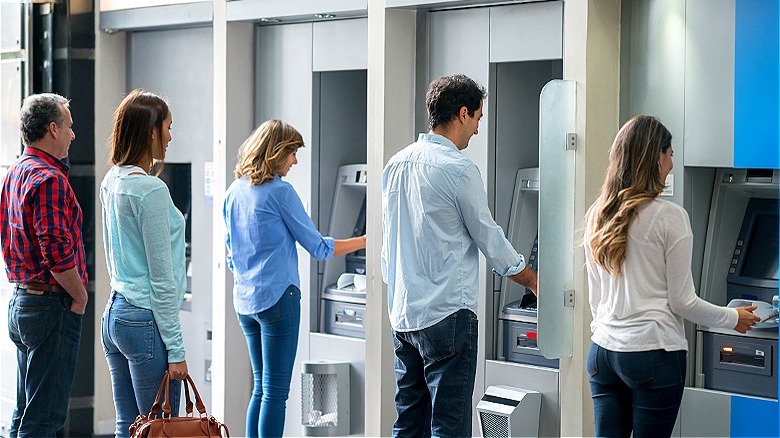How Banks Bust Criminals For Shady Financial Practices
In its 2024 Global Financial Crime Report, Nasdaq found that $3.1 trillion in criminal proceeds flowed through banks in 2023: $800 billion in illegal narcotics, $350 billion from human trafficking, $11 billion in terrorist funding, and more than $485 billion in fraud. Counterfeit checks and credit card scams make up the biggest fraud in the United States, and the people hurt most by these crimes are business owners and consumers who suffer the inconvenience of managing or mitigating losses — disputing credit card charges and freezing credit and checking accounts for consumers, and losing brand loyalty and profits for businesses — usually through no fault of their own.
Speaking to The Takeaway in 2020, BuzzFeed News journalist Anthony Cormier relayed how an investigation between BuzzFeed and the International Consortium of Investigative Journalists found that many American banks ignored multiple reports of suspicious activity. Worse, just 2,100 out of 2 million suspicious activity reports, or SARs, revealed that $2 trillion in suspicious money traveled through the U.S. banking system that year from domestic and foreign sources. "We found suspicious payments flowing into international sports and Hollywood entertainment, luxury real estate, sushi restaurants, the gas that you put in your car, even the granola that you might put in your cereal, or your yogurt," said Cormier.
As a result, banks and government agencies have stepped up efforts to combat shady financial practices under the Bank Secrecy Act, a collection of laws and regulations created to curb money laundering and the funding of terrorism.
FinCEN
PBS NewsHour reports that the Financial Crimes Enforcement Network (FinCEN) was created in 1990 to augment federal, state, and local law enforcement's ability to investigate financial crimes — like money laundering and fraud — through a set list of protocols for financial institutions involving the documentation of suspicious activity in a government database. The database is accessible to all levels of law enforcement against shady characters, like former President Donald Trump's former personal lawyer Michael Cohen, who caught extra attention from law enforcement after two reports about illegal transactions between Cohen and a Russian businessman went missing from FinCEN.
To help it further combat financial crimes, FinCEN was given extra powers through the Corporate Transparency Act (CTA), passed on January 1, 2024. The act requires small to mid-size businesses to file an electronic Beneficial Ownership Information report directly to FinCEN. As per the National Federation of Independent Business, the law was actually passed as far back as 2020 but only came into effect in 2024. Business owners with 20 or fewer employees, along with a 25% stake or more in the business and less than $5 million in sales or gross receipts will need to share their financial and private information, including driver's licenses, with FinCEN. Refusal comes with a stiff penalty of $500 per day, a $10,000 fine, or up to two years in prison. With all the new money scams to watch out for in 2024, FinCEN will be busy.
AI detection
S&P Global research found that check fraud was one of the leading financial crimes in the United States, with 447,525 suspicious transactions reported to FinCEN in 2023 accounting for one-third of fraud cases in financial institutions. As a result, it's become obvious to banking professionals that investing in new technology like artificial intelligence is cheaper than losing to fraud; features like pattern recognition and advanced machine learning make it possible for such AI systems to detect irregularities in a fraction of the time humans can.
JP Morgan, America's largest bank, is just one financial institution investing in new technology; specifically, $15 billion per year. According to an open letter to investors by JP Morgan Chase & Co. CEO Jamie Dimon, a team of 1,000 data managers, 900 data scientists, 600 engineers, and 200 AI researchers have created over 300 use cases for AI, exploring, among other things, fraud detection and the movement of capital worldwide. Said Dimon, "AI has helped us to significantly decrease risk in our retail business by reducing fraud and illicit activity...," going on to state the necessity of AI investment to protect the entire global banking system.
To that point, per the International Data Corporation, global enterprise is projected to spend $143 billion by 2027 on AI services, software, and infrastructure hardware, which is 13 times the expected average rate of revenue growth of IT expenditure from 2023 to 2027. AI detection is the future of financial security.
Biometrics
Biometrics is a technology that analyzes the physical characteristics and behaviors of humans to better confirm or deny their identities. Business Research Insights projects banks around the world and other financial institutions will spend over $1.4 billion on biometrics by 2031. This investment has been spurred by a recognition by the industry that traditional PIN codes, tokens, and passwords have failed to stop fraud and the movement of ill-gotten gains through the banking system. While businesses around the globe suffered through COVID-19 lockdowns, the biometrics market actually grew, specifically in manufacturing, health care, and government as the need for data security also grew.
Deloitte Insights, meanwhile, projects $23 billion in fraud-related losses by 2030, specifically in the case of synthetic identity fraud, which is the theft of consumer identities, or the creation of fake ones by cybercriminals. Cultivation of these identities can take years, with the goal being to build a decent enough credit profile to steal banking information or apply for loans and credit. According to a 2021 report by FiVerity, on average, these crooks can score anywhere between $81,000 to $98,000 with a few cases netting millions of dollars.
These elaborate schemes mean that answering third-party authentication questions is simple, since cybercriminals have created the identity from scratch. This said, authentication factors that support liveness detection through human traits (such as smiling, blinking, sweat, blood flow, and blemishes) and then compare them against a government or national ID, are another tool for banks to protect against fraud.
Suspicious activity reports
FinCEN requires financial institutions to submit documentation around suspicious activity flagged. According to the Office of the Comptroller of the Currency, that documentation is called a suspicious activity report, or SAR, which U.S. banks have been responsible for filing since 2013. These reports should be submitted whether there's an identified suspect or not, although the submission deadline of 30 days can be extended to 60 while a bank conducts its own investigation. SARs should include any cash transaction over $10,000; a record of cash purchases of cashier, personal, and traveler checks, certificates of deposits, money orders; or any suspicious activity indicative of financial crimes like money laundering or tax avoidance.
As reported by FinCEN in 2007, a SAR helped an FBI agent in the mid-2000s discover a complex web of fraud involving high-yield investments and a Ponzi scheme where a group of investors was being paid by the investments of new investors. The scam was international in scope, promising a 1,200% return on investment, all within six months. Forged documents and offshore accounts in the Bahamas and Switzerland hid $13 million in bilked investor's funds. A private jet, a Mercedes Benz, and a yacht followed. The fraudster was caught and given a charge of conspiracy to commit wire fraud and tax evasion.
Currency transaction reports
Per the Federal Deposit Insurance Corporation, currency transaction reports, or CRTs, are another form of documentation banks are required to keep whenever a transaction over $10,000 occurs. This includes currency exchanges, withdrawals, deposits, payments, or transfers. There are limits on these reports, usually for regular commercial clients with special exemptions. Identifiers, such as Social Security numbers, account information, and government-issued identification, are kept on file by your bank for this reason.
For currency transactions, financial institutions treat weekends/evenings with extra care, waiting until the next day of business before processing deposits. If an individual owns several businesses, FinCEN requires banks to treat each business as a separate entity, making the banks responsible for determining whether businesses are independently operated or not. Things like the same employees working for all the companies, with several companies located in the same address, are red flags.
In 2023, $21.8 million in counterfeit cash was seized by the Secret Service, leading to around 200 arrests. In comparison to 2022, that's $19.7 million less counterfeit currency seized, likely related to more of us steering away from cash and going digital. However, security factors built into U.S. cash are also making it more difficult to pass counterfeit bills. Just another layer of security protecting currency transactions.





